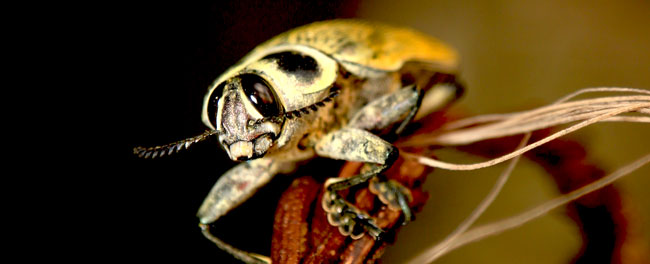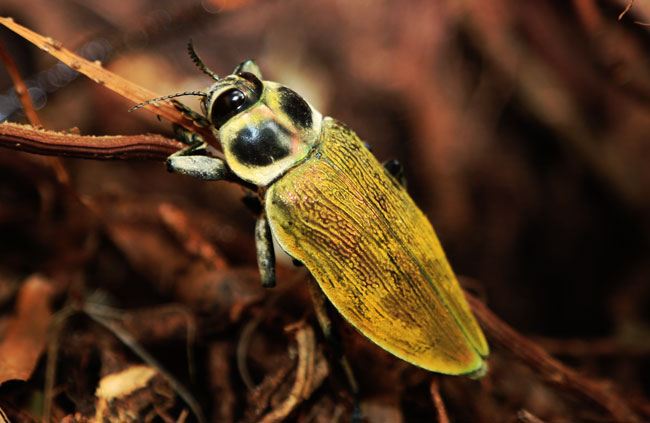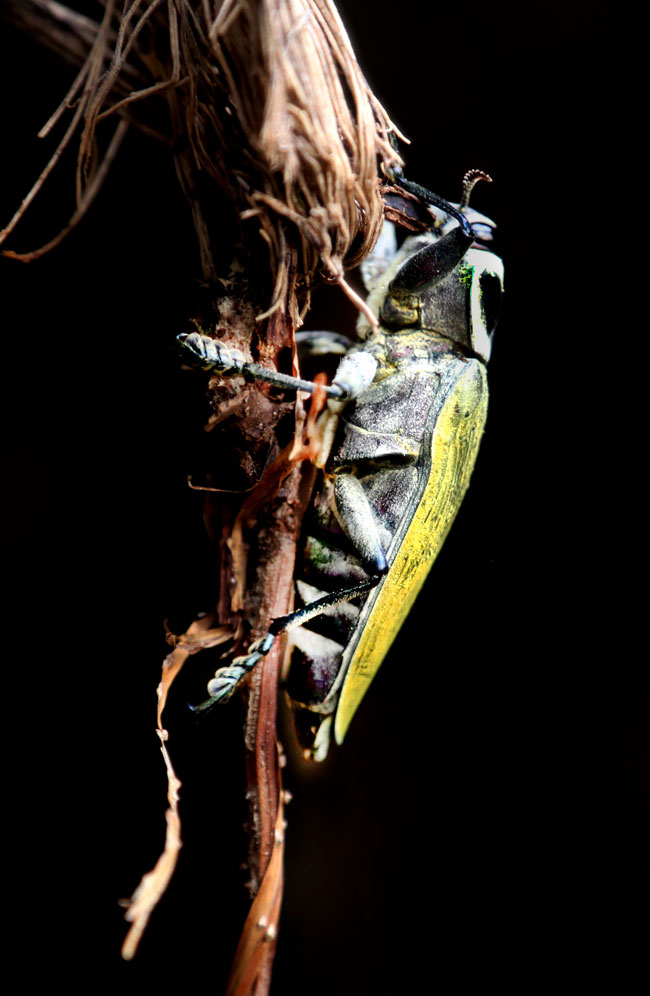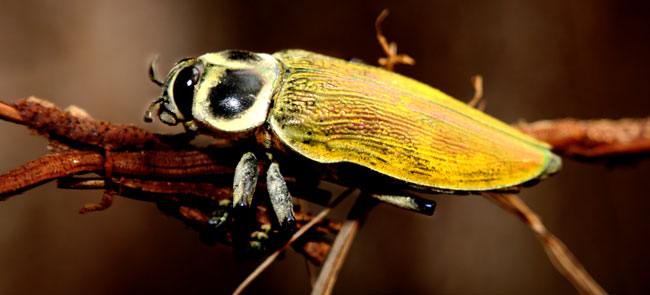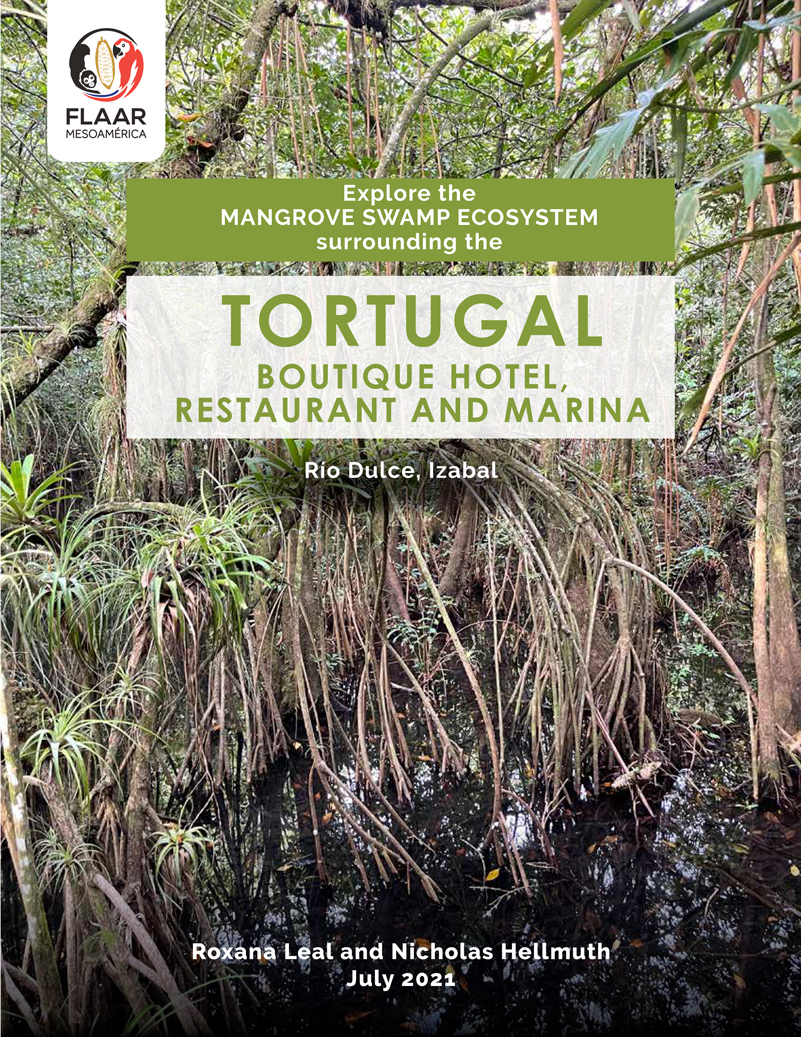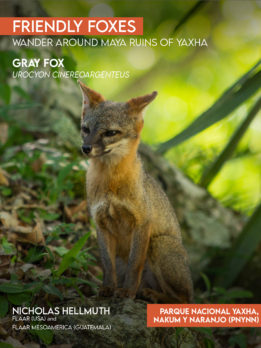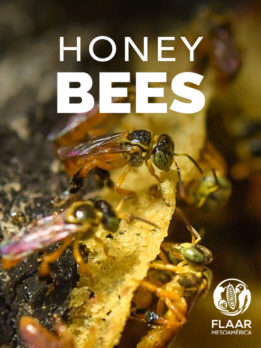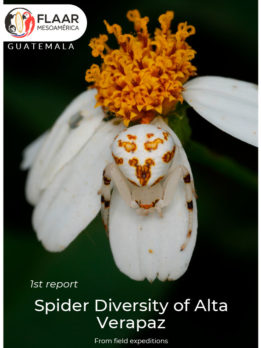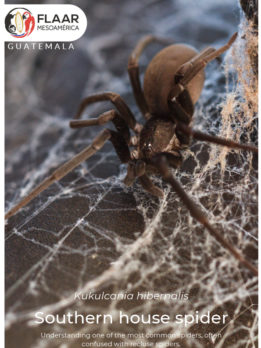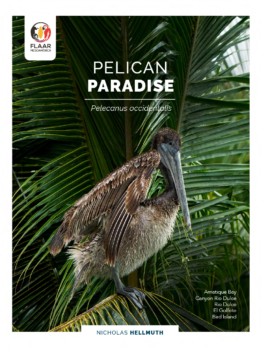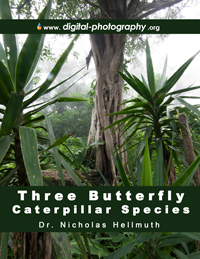Interesting insects of the Mayans
Bees in Guatemala do not have stingers, and they are so tiny often you can barely see them (we know this since we raise wild stingless bees in front of our office in Guatemala City).
Wasps come in every size from normal to gigantic. And there is even one wasp of Mexico and Guatemala which makes honey! It is called the Mexican Honey Wasp.
And beetles come in every size, shape, and color that you could possible imagine.
It is normal that many people are afraid of insects, but when Dr Nicholas goes into the jungles he often has up to two giant wild tarantulas wandering up and down his hands and arm. It is not uncommon to wake up with a scorpion crawling across your stomach in your bed.
Today we will introduce one of the more colorful beetles of Guatemala: the ceiba borer beetle (it bores into the soft wood inside the hollow ceiba trees; the wood is soft since the core of most really old Ceiba pentandra trees are hollow with rot.
An amazing insect in Guatemala, Belize, Mexico, and Honduras
This discussion is about an insect which has a glowing jewel-like surface. Indeed native people of South America use the insect as a precious jewel.
This same insect often appears covered with a yellow powder. Some sources say it is a wax which is exuded once upon its top surface. But other people have commented that it looks like pollen which has stuck to a sticky surface. I will defer to entomologists as to the actual nature of the powdery surface. And whether once it loses its yellow, that the yellow never appears; this I would need to have proof that someone has monitored the same individual beetle for many months.
But whatever the beetle biologists encounter, the ceiba borer beetle is definitely an amazing bug.
Ceiba borer insect, Euchroma gigantea, common where there are ceiba trees
The day before Christmas (2011) we found a giant Ceiba borer insect, Euchroma gigantea, along Rio Dulce, Izabal, Guatemala.
I spend every Christmas vacation getting as far out in the swamps or jungles of Guatemala as possible. My goal is to escape Christmas parties (and escape excess alcohol) and to spend the time learning about plants, insects, birds, flowers that are part of the Maya world. For Christmas 2011 I escaped office reality and spent the week in Izabal and Alta Verapaz.
Christmas weekend I was guest of the finca of Rick Bronson, courtesy of the finca manager at that time, Scott Forsythe. Scott is studying stingless bees and has been helpful in introducing me to people he knows who have stingless bees.
Rick Bronson has worked in archaeology of Guatemala in past decades so I first met him probably 30 years ago. I was re-introduced to him and to Scott by Kevin Lock, who is a knowledgeable guide in the Rio Dulce area.
I indicated to Kevin that we were looking for the insects that appear in Maya bowls and vases of the Tepeu 1 period at Tikal and Uaxactun (first half of the Late Classic). We have long ago recognized the Maya insect as one of the lightning bugs (it is usually mis-labeled in reports on ceramics as a cockroach, or occasionally even more inaccurately, as a bee). Kevin suggested that we look at the Ceiba borer beetle.
Ceiba borer beetle, Euchroma gigantea, photographed by Andrea Mendoza, with a Canon EOS 5D Mark III, Retalhuleu, Guatemala., December 2014.
It has not yet been realistic to find a person to go collect insects for us, and since we are tracking down 400 species of plants and 200 species of creatures (including a dozen insects). But the day before Christmas someone in our group noticed a relatively large insect crawling around the kitchen (out on a dock, over the Rio Dulce). Since it was large, and iridescent, we decided to photograph it. Once we had the photos back in our office we realized this was probably the Ceiba borer, Euchroma gigantea. On the Internet I see the species name spelled three different ways:
- Euchroma gigantean
- Euchroma giganteum
- Euchroma gigantea
Since the insect was already injured and ailing, he, or she, did not pose well, and we had no lighting. Plus it was raining all night and much of the day, so we were pretty soaked (and covered with mud). Next time we will try to get better photos (we had only a towel as a backdrop!).
- Turkey vulture, Cathartes aura
- Black vulture,Coragyps atratus
- Lesser yellow-headed vulture, Cathartes burrovianus
- King Vulture, Sarcoramphus papa
Ceiba borer beetle, Euchroma gigantea, photographed by Andrea Mendoza, Dec. 2014.
Euchroma gigantea is also called the Jewel Beetle or Metallic Ceiba Borer
Since the insect has a beautiful flowing surface, it is also called the Jewel Beetle or Metallic Ceiba Borer.
The beetle pictured on Maya vases of Tikal and Uaxactun
The large beetle which is often painted on polychrome Maya bowls and vases of Late Classic (Tepeu) Tikal and Uaxactun has only one coloration spot; this ceiba borer insect has two.
Compared with other photographs on the Internet, such as Flickr (by James Boone), it appears that the specimen we had on Lake Izabal was rather worn out; the colors are nowhere near as bright and beautiful as others. Although our specimen was definitely not “small” I did not think it was any kind of giant.
In the future we will work at finding the larvae, reported to be unexpectedly long! And we will take better photographs next time.
The insect shown for Peru is a totally different species.
Ceiba borer beetle, Euchroma gigantea, photographed by Andrea Mendoza, December 2014.
In December 2014 we found more bright yellow Ceiba beetles
While exploring the Costa Sur to find giant ceiba pentandra trees with open “rooms” in their trunks, we found a beautiful specimen of the bright yellow phase of the Euchroma gigantea. It was wandering around on the trunk, about 2 meters from ground level.
When we approached the tree it moved higher up, so either it has excellent eyesight or other manner of sensing presence of people.
Then Andrea Mendoza found more of these insects inside a giant rotten core ceiba tree on the finca of her parents, outside Retalhuleu.
Although we often study other trees related to ceiba, especially zapotón, Pachira aquatica also called Pumpo), we have never seen these beetles near the other trees, probably because the Ceiba is more likely to have massive rotten areas.
Ceiba borer beetle, Euchroma gigantea, photographed by Andrea Mendoza, inside the rotted hollow core of the trunk of Ceiba pentandra near Retalhuleu, Guatemala.
How many Mayan people eat the ceiba borer, Euchroma gigantea?
The Highland Tzeltal Maya reportedly eat this insect (Grzimek, but no citation), but they are primarily in Highland Chiapas. It’s a real hassle to criss-cross the border nowadays, so we have not tended to do much field research in Mexico or Belize. It’s easier to cross the border into Honduras and El Salvador
Virtually every web site all over the Internet repeats the statement that the Tzeltal Mayan people of Chiapas, Mexico eat the beetle. But 99% of these copy-and-paste statements have no citation whatsoever. But the book by Charles Hogue, Latin American Insects and Entomology, clearly mentions a 1979 article by Hubbell. However I would prefer to look at the ethnographic monographs on the Tzeltal to double-check (which I will do as soon as I get my 11,000+ volume library out of storage in the USA, since our office is not large enough to hold that many books; we have only about 500 monographs in our office library in Guatemala since we have loaned about 2000 volumes to the Museo Popol Vuh, Universidad Francisco Marroquin about 15 years ago).
Hubbell, P.
1979 Adult Beetles as Food. Coleop. Bull. 33:91.
Are there Mayan hieroglyphs which picture insects?
The Cascajal Block, thought by some to be an Olmec hieroglyphic inscription, but thought to be a fake by other Mesoamerican scholars, shows insects. I have seen a lot of Olmec fakes, but this one is not from any of the known “fake factories.” I remain neutral on its authenticity (I would need to see it in person to judge it further).
Although birds, mammals and even fish are common in Mayan hieroglyphs, insects are not common.
Is the Ceiba borer insect, Euchroma gigantea, pictured in Classic Maya art or mentioned in myths?
Bees, beetles (probably lightning bugs) and other insects are clearly pictured in Classic Maya art, especially in painted ceramic bowls and vases of Tepeu 1 of Peten. There are a few from Tepeu 2 period.
Ants are mentioned in the Popol Vuh (leaf-cutting ants which often cut and carry flowers instead of leaves).
Butterflies are common in the murals and ceramics of Teotihuacan, including Teotihoid style incense burners from the Costa Sur of Guatemala. But butterflies are rarely found in Mayan art.
Centipedes are not “insects” but are occasionally pictured in Post Classic art of Mesoamerica. Scorpions technically are not insects but their images appear on Classic Maya ceramic art and as eccentric flints or eccentric obsidians as offerings underneath stelae.
The Post Classic Mayan codices show scorpions and other creatures, but not many beetles. Beetles are found mainly on Tepeu 1 painted bowls and small vases of the Peten area.
But I have not yet noticed the Ceiba borer insect in Classic Maya art or found it in the Popol Vuh.
Edible Insects in Mexico and Guatemala: Aztec and Maya
I have never met anyone in Guatemala who eats this insect. But the Popol Vuh says clearly that ancestral Mayan people at bee larvae and wasp larvae. Today people all around Guatemala eat Zompopo de Mayo (the female of the leaf-cutting ants; they come out by the thousands during Spring, at which time many are caught and eaten by local people.
Summary and Conclusions on the ceiba borer, Euchroma gigantea
Since the Ceiba pentandra tree is sacred to the Classic Maya, and since the Maya picture sacred insects, it is logical to ask if a ceiba-related insect is one of the sacred Maya beetles?
However the double spot pattern (on prothorax) on this insect is totally different than the focus on a single dark spot of the sacred Maya insect. And there is no “open space” between the two top wings. Plus, there are indeed other insects which look much much closer to the insect pictured on painted pottery at Uaxactun and Tikal.
Nonetheless, we should keep track of the ceiba borer, Euchroma gigantean, as it is reportedly edible and hence should be included in any thorough study of Maya diet. Plus the color and iridescent effect is quite noticeable and surely the Maya would have been attracted to this insect.
Annotated Bibliography on the ceiba borer insect
Our team of researchers are preparing a bibliography on the ceiba borer jewel beetle. It takes a while since we are studying all creatures of Mesoamerica related to Mayan culture plus all fascinating animals, insects, and even shellfish of Guatemala and Mesoamerica.
Many web pages call this the Ceiba borer insect, Euchroma giganteum. Wikipedia calls it Euchroma gigantea.
Updated February 2017
after more research after I found it was a potential pollinator.
Posted December 2014 after finding ceiba borer beetles in two rotting ceiba trees.
First researched January 2012.


